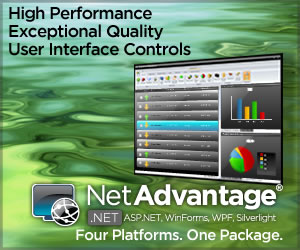Philadelphia Insurance Makes One System Fit All Niches
- Friday, April 1, 2005, 12:00
- Special Features
- Add a comment
 The Philadelphia Insurance Companies has developed a profitable business one niche at a time. Writing coverage in all 50 states, the carrier seeks out narrow product targets, such as professional liability and commercial-package policies, and niches like non-profit human services. This specialized expertise enables it to create unique or customized coverage that helps generate consistent underwriting profits.
The Philadelphia Insurance Companies has developed a profitable business one niche at a time. Writing coverage in all 50 states, the carrier seeks out narrow product targets, such as professional liability and commercial-package policies, and niches like non-profit human services. This specialized expertise enables it to create unique or customized coverage that helps generate consistent underwriting profits.
To maintain a business that competes on features rather than price, the carrier has deployed AQS/advantage, a commercial policy administration system built on the Microsoft .NET platform. The company had used AQS for commercial lines and a relatively simple proprietary system for its professional lines but recently moved everything to AQS/advantage.
“Having all of our users on one platform really helps streamline the workflow process,” said Terry Panichelli, vice president of underwriting operations at the carrier, who noted that since a customer might have four or five different types of polices with the company, using a single system and standard processes simplifies work for agents and internal staff.
“We can start to develop more standard procedures on how we do business with our agents, how we do business with our company employees in other departments, and how we make our processing more efficient,” she explained.
The fact that AQS/advantage runs on Microsoft technologies, including SQL Server, played a big role in its selection at Philadelphia.
“We are a Microsoft shop; 100 percent of our servers are Microsoft, and all of our databases are SQL,” said Frank Giardina, vice president of information technology at the carrier, who observed that for his size shop, standardizing on Microsoft just makes sense.
“It is cost-effective from a personnel perspective. We can get talented people who have Microsoft skills at an economical rate, and a single platform means we don’t need pockets of specialty technology within the department,” said Giardina.
A single platform also means that business components work well together.
“Because it is all Microsoft, we can integrate with Outlook, we can use other pieces of software that Microsoft provides, like Sharepoint, and we can integrate them without going to third parties or using special middleware,” he said.
Once agents submit business, usually electronically, it goes into the carrier’s proprietary PATH system, a workflow program that tracks submissions and transactions through the entire workflow process from beginning to end and stores the related electronic images. This makes the process paperless and allows items to be shared immediately among users. From there, the policy information goes into AQS/advantage for rating, quoting, and issuance.
“AQS/advantage gives us a common platform for all of the rating that takes place,” Giardina said. “Many insurance companies have different ratings and issuance engines, but we have honed it down to just the one.”
As the carrier rolls out AQS/advantage state by state, Giardina is seeing opportunities to make improvements in the business processes.
“By using the system you start to see where you can get workflow advantages, and how you can use AQS/advantage to incorporate them. You can change work patterns around to take advantage of what the system can do,” he said.
The new system has already brought marked improvements in processing, said Panichelli. Instead of mailing policies on paper, the company burns them onto a CD. In the past, as part of that process, the user had to take the policy, convert it to a PDF file, and insert the bookmarks.
“Now with AQS/advantage, the policies are automatically produced in Adobe, and all the bookmarks are built into the policy, so we don’t have to go through the tedious manual process any more. And we get the policy out the door that much faster,” Panichelli said.
Some edit controls have been moved up front in the policy process to catch errors immediately and force the user to make a correction at the data entry stage.
“That way the policy goes out correctly; we have virtually eliminated issuance errors,” she said.
The single system also has eliminated the need to re-key data from the issuance system to the premium reporting system. With the sophisticated access control in AQS/advantage, the carrier can make data on the system available to other departments, such as customer service and claims.
“With its ease of use and functionality, we make it available to our internal departments like claims, marketing, and customer service,” said Panichelli. Before this, only a few highly trained people in other departments were allowed to use the system for queries.
AQS/advantage makes the issuance process much faster, she added, although it is still too soon for any comparison data.
“It took us two months to get all 400 of our users trained. With the simple renewal conversion tool, we should start to see true measurable benefits by the end of the first quarter,” said Panichelli. “Our goal is to automate and integrate AQS/advantage into our Web-centric delivery systems so our customers reap the benefits.”
 Print This Post
Print This Post






